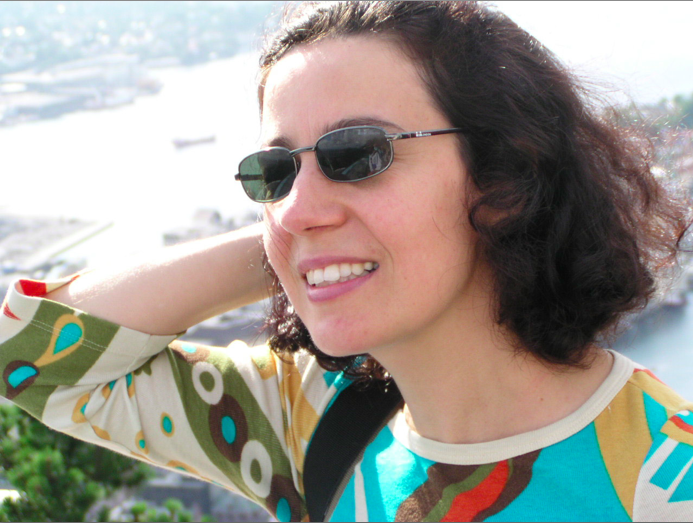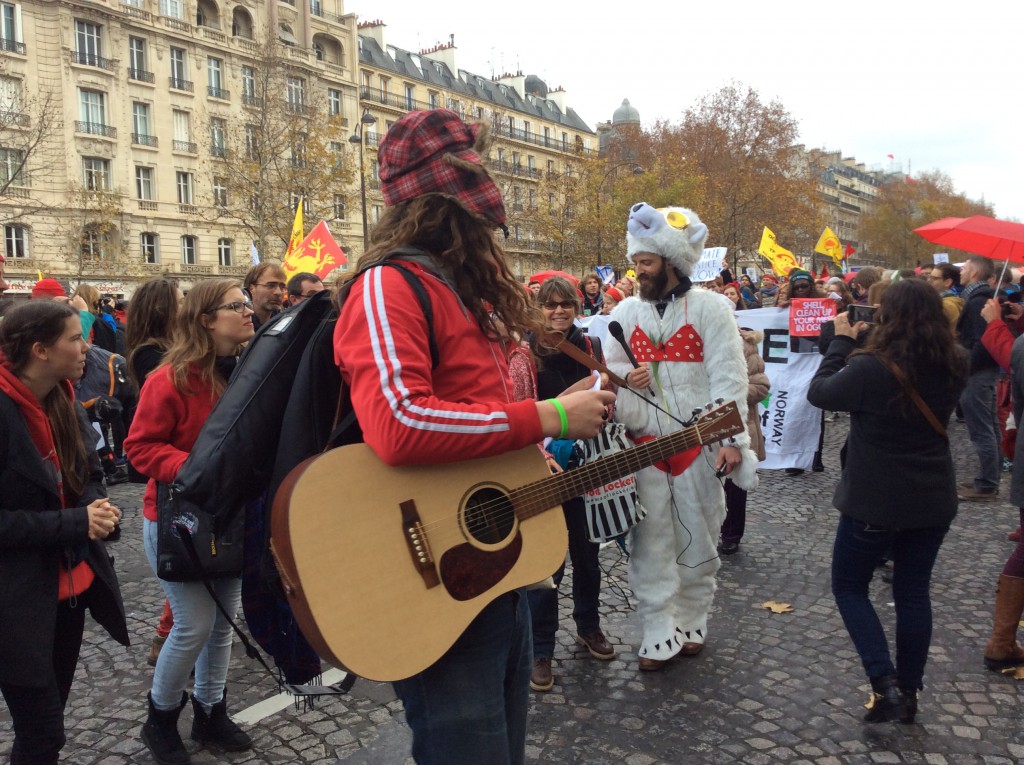
On Saturday morning the COP went past its scheduled finishing time. With successive postponements of the release of the agreement text (which what was going to be, in all likelihood, a watered down, strategically vague version of what the world needed) I found myself wondering what to do.
Having been all week at Le Bourget conference centre as an observer representing the International Environmental Communication Association, I decided to spend that day on the other side of history, the side of the citizens in the streets of Paris who defiantly organized several demonstrations to express their resolve in struggling for a better planet (eventually authorized by the police the day before).
After being prevented from exiting at my intended metro stop (“closed for security reasons”) and then forced to change plans again as buses modified their routes because of the “manifs”, I was lucky enough to walk right into the frontline of a demonstration.
I was at first curious to check how many journalists were present. There were plenty of cameras but I could only see a couple that looked to belong to professionals. I soon realized one video belonged to RTP, the Portuguese public service television. A journalist and cameraman were talking to someone I knew and I ended up being recruited to speak live at the start of one o’clock news as “an observer of the COP”. I hesitated for a bit. I had gone to the demonstrations as an anonymous citizen of a globalized world, one more body to engross the demand of respect for “red lines” (a strong activist icon at this COP), and was now pushed back into my other identity, which I thought I had left behind at Le Bourget.
![image[2]](https://climatematters.blogs.uni-hamburg.de/wp-content/uploads/2015/12/image2-1024x765.jpeg)
Two weeks earlier, on the 29 November, the day of the Global Climate March, I had seen that same television company change their normal programming in RTP1 (their main, generalist channel) to connect live to the activists-police clash in the Place de la République in what appeared to be alarmist and sensationalist journalism coverage. There were the police shields, metal barriers and pepper spray; all the usual ingredients of a news article’s “activism-as-violence” narrative.
As many studies (and our own experience as media consumers) suggest, the “violent protest” frame often subsumes any other layers of meaning and modes of affirmation of citizenship. That media imagery is likely to impact on social representations of activism and of activists, and conduce many people to distance themselves from such practices and profiles. It may even promote disengagement with public causes and claims.
![image[1]](https://climatematters.blogs.uni-hamburg.de/wp-content/uploads/2015/12/image1-e1450174089168-765x1024.jpeg)
Back to last Saturday: As I walked with RTP’s crew ahead of the demonstration, I kept wondering about the thought process behind the symbolic construction of the footage of protesters that occurs at different levels of the journalistic and editorial hierarchy within the public service broadcaster. I also thought about what I was going to say and what persona I was going to take up in the screens of one of the biggest channels back in Portugal. There was the “me, the citizen” that was frustrated and had political claims to make. But that was not what the journalist wanted me to speak as. There was the “the academic” side of me that could make a “cooler” analysis of the situation. But an analysis of what? I am a communications scholar and that was not what the journalist wanted me to speak as/about. She wanted me to talk about the agreement. So the “the observer” side of me kept thinking about the observer communities back at the COP and what they thought about draft versions of the agreement.
The UNFCCC awards observer status to multiple types of organizations: business and industry non-governmental organizations (BINGOs), environmental non-governmental organizations (ENGOs), local government and municipal authorities (LGMAs), indigenous peoples organizations (IPOs), research and independent non-governmental organizations (RINGOs), trade union non-governmental organizations (TUNGOs), farmers and agricultural non-governmental organizations (Farmers), women and gender non-governmental organizations (Women and Gender) and youth non-governmental organizations (YOUNGOs). The nine UNFCCC “constituencies” have, obviously, widely diverse views in many regards. Plus, each of them is a loose group of actors with multiple perspectives and preferred discourses. Furthermore, observers to the COP are not the same as observers to elections: they are there to try to influence the outcome in one way or the other even though they are given very little voice in the process.
I had gone to side events and press conferences by different types of observers throughout the COP and heard the frustration of many of them towards the emerging text. However, as I wrote in another blog post, RINGOs (the constituency I was part of through IECA), were supposedly not advocating a particular outcome, a non-position that makes me wonder whether all of its members identify with it.
Coming back to my live interview, I didn’t have long to reflect upon which observer identity to take up. The microphone was in front of me for a predictably short time after references to a “report” of a girl “beaten up” by the police (which the journalist did not appear to be well informed about) and to the police helicopter up in the air. I ended up sounding more like the academic than a citizen but inserted cautionary “observer” points just before the helicopter was mentioned again.

That evening I watched France24 for several hours, anticipating the celebratory, triumphalist tone and the symbolic dividends that France was going for.
There was nothing about the large, peaceful demonstrations that had taken place a few hours earlier. Looking at the websites of other public broadcasters the story was pretty much the same.